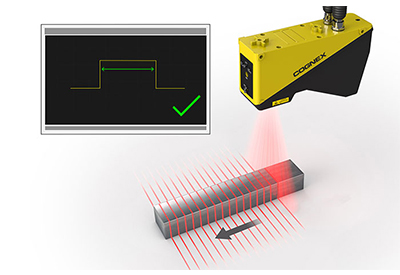Driving Digital Transformation Through Siemens Xcelerator and Its Leading Portfolio
October 19, 2022

- Open, digital business platform Siemens Xcelerator based on comprehensive, curated portfolio of software, services and connected hardware keeps expanding
- Volta Trucks and Siemens partner to accelerate commercial fleet electrification
- Automotive Cells Company (ACC) and Siemens partner to optimize battery cell production
- Siemens is confident to exceed 10 percent revenue growth in its digital businesses, in fiscal 2022
- Digital Twins are building blocks of the emerging industrial metaverse
Together with its partners and customers, Siemens is driving the digital transformation of economies through its open digital business platform Siemens Xcelerator, launched on June 29, 2022. The platform consists of a comprehensive, curated portfolio; a powerful ecosystem of partners and a marketplace for customers, partners and developers and strives to make digitalization easier, faster and at scale. Recently, Siemens announced two new partnerships related to the Siemens Xcelerator platform.
In collaboration with Volta Trucks, Siemens wants to accelerate the electrification of commercial fleets. This partnership ensures power distribution, renewables integration, and energy services to build sustainable, electric fleet hubs. Siemens has also announced a memorandum of understanding for a strategic partnership with Automotive Cells Company (ACC) for electric vehicle battery cell production, based on the digital portfolio of Siemens Xcelerator.
In addition, key customers are leveraging the curated portfolio, such as REGENT. The company, founded in 2020, builds all-electric seagliders for fast, safe, and low-cost coastal transportation and has adopted the Siemens Xcelerator portfolio of cloud-based software and services. Another example is a collaboration with the Fédération Internationale de l’Automobile (FIA) supporting them and their Championships including Formula 1 with sustainability efforts by adopting solutions from Siemens Xcelerator as a Service.
Watch this video to see the Siemens Xcelerator Bedtime Story
A core lever for value creation at Siemens is the company’s goal of growing its digital businesses by around ten percent per year by 2025. The launch of the Siemens Xcelerator platform has been the logical next step in Siemens’ digital strategy. Siemens will be able to unlock significant value for existing and new customers, especially new ones in the segment of smaller and mid-sized businesses.
The launch of the business platform is also consistent with its move towards as-a-service offerings and will bolster the aim of increasing annual recurring revenue. In the first nine months of fiscal 2022, Siemens achieved revenues of €4.7 billion through digital businesses and is well on track to exceed 10 percent growth, in fiscal 2022. Digital revenue in fiscal 2021 stood at €5.6 billion.
“Siemens is about connecting the real and the digital world unlike any other company. It is about the convergence of software and hardware. Making hardware smart, equipping machines with sensors, connecting them to the internet of things, and using artificial intelligence to make them intelligent is the basis for industrial digitalization. Yet the best solution becomes a bad solution if it does not work well together with other technologies,”
says Peter Körte, Chief Technology Officer and Chief Strategy Officer of Siemens AG. “The Siemens Xcelerator platform and its solutions are not about us or restricted to us. It’s all about making digitalization easy for our customers by providing solutions that work and are open to grow.”
Siemens Xcelerator ecosystem continues to evolve
Since the launch of Siemens Xcelerator about three months ago, 58 partners have been certified, new offerings have been added, including Railigent X and Mobility Software Suite X from Siemens Mobility. With planned acquisitions like ZONA Technology, Siemens Xcelerator will increase its capabilities for climate-neutral aviation and included predictive maintenance capabilities for manufacturing with the company Senseye.
The collaboration with Munich based company sustamize GmbH adds carbon emissions data to Siemens Xcelerator and is enabling organizations to measure, simulate, reduce, and track their product carbon footprint early in the product development phase. With Esri as a partner Siemens can bring grid planning and operation to a new level. These partners not only add with their portfolio to the platform, more so, develop solutions together with Siemens for the pressing needs of customers.
Watch this video to see Siemens Xcelerator Best Recipe
From Digital Twins to the industrial Metaverse
The interoperability and openness of Siemens Xcelerator with its curated portfolio, where in future everything works seamlessly with each other, is the perfect basis for the Industrial Metaverse where players meet to democratize technology by making immersive experiences accessible to everyone. The digital twin is the key technology for this digital transformation in this decade. A digital twin is a software application that uses real-world data to create a simulation of a physical object such as a building or a service, which can then be used to predict how it will perform. Siemens, through its Digital Industries Business, is one of the pioneers and global leaders in digital twin technology.
One specific use case: This helps cities to optimize all aspects of design, construction, operations, and management. On a larger scale, digital twins can be used for the development and operation of entire cities and districts like Siemensstadt Square by interconnecting buildings, transportation systems and other infrastructure such as energy distribution.
The advantages of this technology are immense in terms of financial, sustainability and livability improvements. Potentially costly mistakes can be avoided because the future-oriented location is being built twice – first in the digital world and then in the physical world. This way, mistakes can be made in the digital world first by seeing what the impact will be. Instead of having people adapt to a city or neighborhood, a city or neighborhood can now adapt to the needs of the people.
Through a partnership between Siemens and Bentley Systems, formalized in 2016, both companies have developed a digital twin for the process industries. Bentley is strong in engineering technology and Siemens is strong in operations technology including hardware and software. Bringing together operations technology (OT) with information technology (IT) is what infrastructure digital twins are at their core. By putting complementary strengths together to work across the lifecycle one offering is to build, operate, and optimize intelligent infrastructure. In the case of Siemensstadt Square, a holistic digital and integral city twin offers the possibility to pre-simulate and significantly optimize urban planning and operations.
The metaverse will require platforms that work seamlessly with edge devices and with each other. Digital twin platforms can share content with anyone involved in the infrastructure lifecycle including the engineers, contractors, builders, site engineers, and the general public. Infrastructure digital twins are the fundamental building blocks of virtual worlds that will allow groups to interact and collaborate in the metaverse to solve problems such as making infrastructure greener, more sustainable, more resilient. Current technologies forming a comprehensive digital twin solution, already available from Siemens, are paving the way to the industrial metaverse.
To learn more about the Siemens Xcelerator platform, click here
Related Story
Siemens: A Technology Leader in Canada for 110 Years
When global companies invest in Canada, they invest for the long haul. That’s the case with technology company Siemens, which established its Canadian operations more than a century ago. Today, Siemens Canada has 24 offices and manufacturing facilities across the country, including its headquarters in Oakville, Ontario. Watch this video to learn about Siemens Canada’s focus on technology for industry, infrastructure, transportation and healthcare.
Find out how the company’s 2,500 employees are building more resource-efficient factories, resilient supply chains, smarter buildings and grids, and greener transportation.



